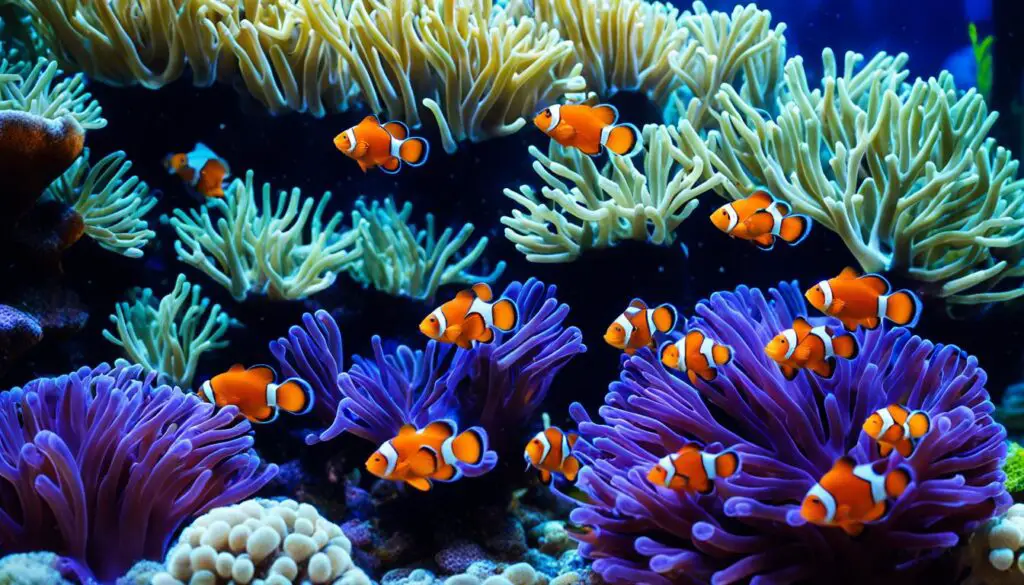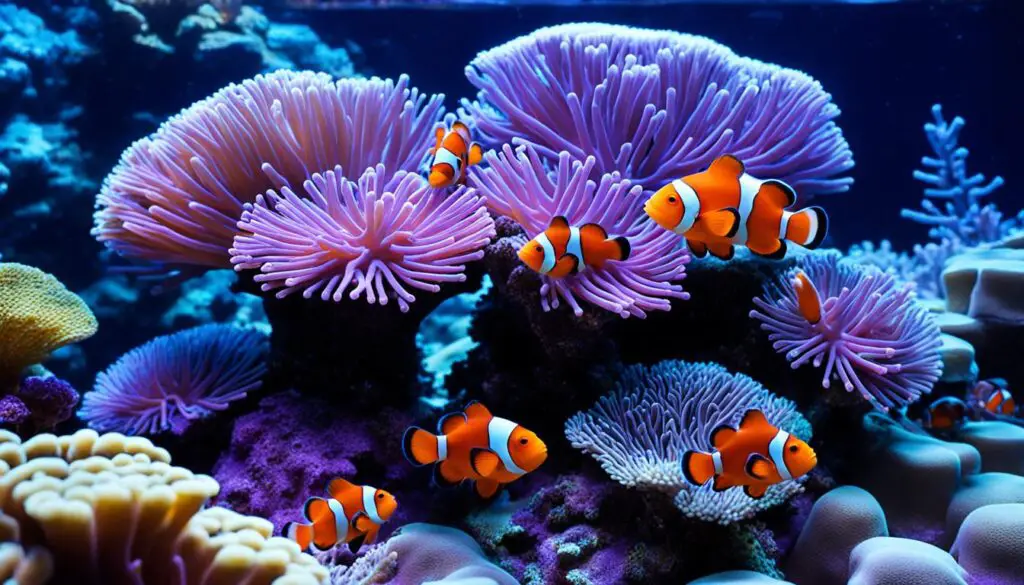Clownfish Tank Preservation: Ensuring Future Generations
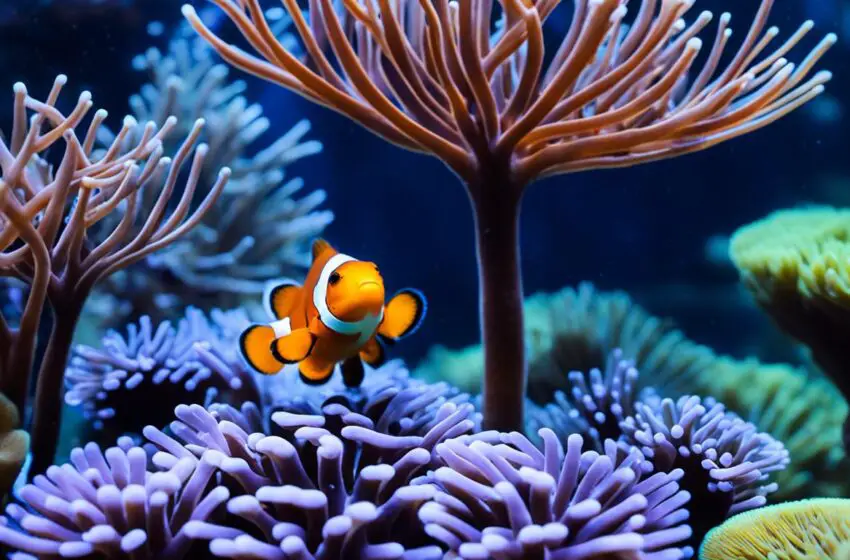
A new study from France’s National Centre for Scientific Research (CNRS) and the Woods Hole Oceanographic Institution (WHOI) found some concerning facts. Clownfish, made famous by movies like “Finding Nemo” and “Finding Dory,” are struggling. They can’t change quickly enough to deal with their changing world. This puts their future at risk.
The study focused on clownfish living in the lagoons of Kimbe Bay in Papua New Guinea. It looked at them over a ten-year period. Researchers learned that the health of the anemones where the clownfish live is key. Healthy anemones mean the fish can adapt better to changes. To help clownfish survive climate change, saving their homes is critical.
Key Takeaways:
- Clownfish lack the genetic capacity to adapt to rapid environmental changes, endangering their long-term survival.
- A study in Kimbe Bay, Papua New Guinea, found that the health of clownfish habitats, particularly the anemones they rely on, is crucial for their adaptability.
- Conservation efforts must prioritize sustaining the quality of clownfish habitats to ensure their persistence in the face of climate change.
- Preserving the genetic diversity of clownfish populations through breeding programs and promoting responsible pet ownership are vital for their conservation.
- Combating overfishing and the illegal exotic pet trade is essential to prevent further local extinctions of clownfish species.
The Impact of Climate Change on Clownfish Habitat
Rising ocean temperatures due to climate change are a big threat to clownfish homes. Clownfish, known for their bright colors, depend on coral reefs and anemones to survive. But, these homes are struggling because of warm oceans. This makes it hard for clownfish to find good places to live.
Clownfish live in coral reefs, which are now at risk. As seas get warmer, the corals turn white and sometimes die. This is called coral bleaching. When this happens, clownfish and their host anemones suffer. With fewer anemones around, clownfish struggle to find safe places.
The quick warming of coral reefs is a big problem for clownfish. Sadly, clownfish can’t adapt quickly enough to these changes. Their homes are disappearing faster than they can find new ones. This is making their survival very challenging.
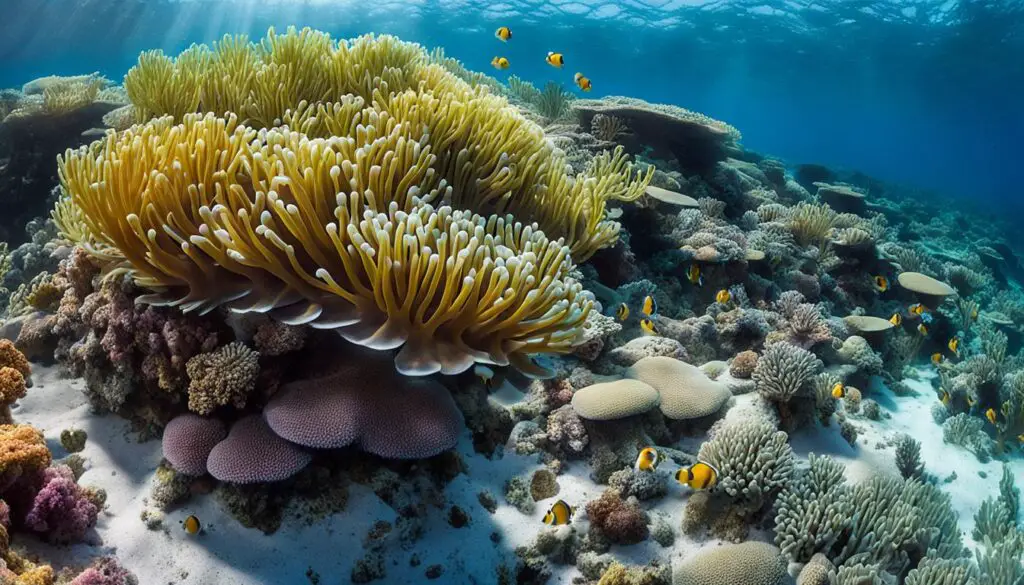
The Great Barrier Reef, where many clownfish live, is facing severe bleaching. This is happening all over the world. So, it’s clear we need to act fast to stop climate change and save these special fish and their homes.
“Rising ocean temperatures and habitat degradation are jeopardizing the survival of clownfish populations, making conservation efforts all the more imperative.” – Marine Biologist
Everyone, from individuals to entire countries, must act together to fight climate change. Saving clownfish habitats is crucial. This includes efforts to protect and repair coral reefs, which are vital for the fish to survive.
The Threat of Warming Ocean Temperatures
Climate change is making oceans warmer everywhere. As this happens, corals become stressed and lose their colorful algae. This affects the whole coral ecosystem, including the anemones that clownfish need to live with.
Habitat Degradation and Species Displacement
As clownfish homes worsen, it doesn’t just hurt the fish. It also harms the many other animals that rely on these habitats. This loss of homes has a serious trickle-down effect on the whole reef ecosystem.
Conservation Efforts: Protecting Clownfish and Their Habitats
Conservation work is key in fighting the effects of climate change on clownfish. This includes setting up protected marine areas, fishing in a way that doesn’t harm the ocean, and rebuilding coral reefs.
The Importance of Conservation Efforts
Conservation efforts are key to the future of clownfish. Scientists work on species survival plans. They run breeding programs to save these fish for the next generations.
Overfishing and the illegal pet trade have hurt some clownfish. Captive breeding has become their hope. These efforts not only increase their numbers but also aid in research and conservation.
Breeding programs must be done with care. It’s important to follow strict rules to protect the fish and their homes.
Spreading the word against the illegal pet trade is crucial. It can stop overfishing and habitat loss. Talking about why saving biodiversity matters can get people to act and be better pet owners.
Species Survival Plan
The Species Survival Plan (SSP) is crucial for clownfish and other at-risk species. It’s run by zoos, aquariums, and conservation groups. They work together to keep the fish healthy and diverse.
The SSP for clownfish is all about teamwork and knowledge sharing. Scientists aim for strong breeding programs. They prevent health problems from too much family-related breeding.
SSPs need everyone’s help to work. With public support, clownfish can survive and thrive in the oceans.
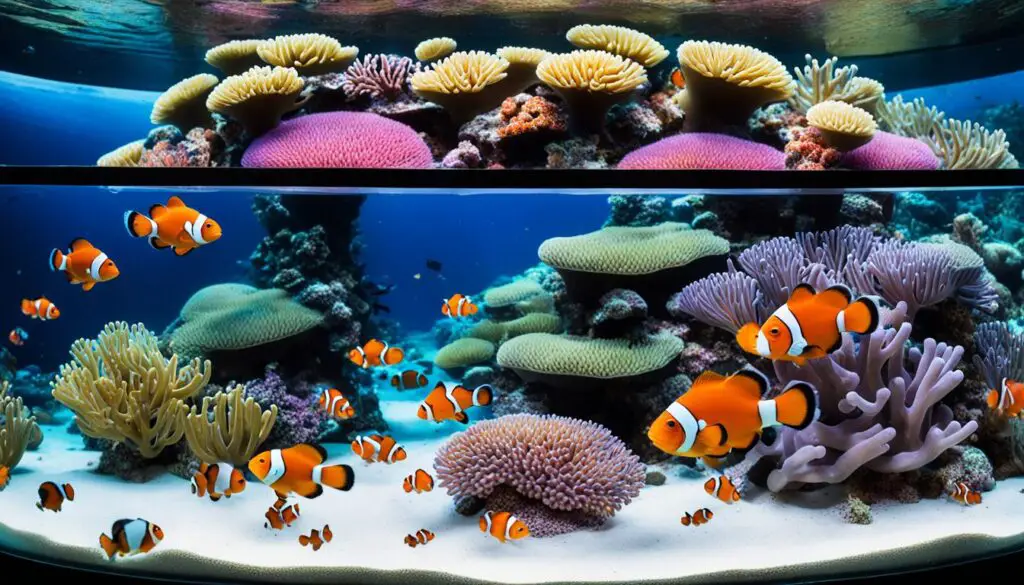
Conservation Initiatives
Groups around the world are working to save clownfish. Their work includes:
- Creating MPAs to protect fish homes
- Using better fishing methods
- Studying climate change and how it affects the fish
- Educating people on why clownfish are important
- Working with locals for eco-friendly tourism
Everyone’s efforts together can make a real difference. They aim for a lasting, healthy world for these colorful sea creatures.
Conclusion
The future of clownfish in the wild is uncertain because of the climate crisis. Clownfish can’t adapt quickly to big environmental changes. This makes their survival in the long run very risky. But, we can save them with conservation efforts. These include breeding programs and making people aware of how to own pets responsibly.
Their homes, like coral reefs and anemones, need to stay healthy for clownfish to live. Climate change is making it harder for these creatures to survive. We must act to lessen these impacts and keep their homes safe. This will help to keep clownfish around for people in the future to love.
We must focus on saving clownfish from going extinct. By helping with survival plans and breeding programs, we can help. Also, spreading the word about the dangers they face is important. Let’s protect these amazing fish and their homes. While clownfish can’t change on their own, we can make a big difference. Together, we can keep clownfish part of our world.
FAQ
What can I do to help preserve clownfish tanks for future generations?
Support conservation projects for clownfish tanks. Learn about good pet care. Avoid the illegal exotic pet trade. By doing this, you’ll help keep clownfish around for the future.
How does climate change affect clownfish habitats?
Climate change harms clownfish homes. Warm oceans hurt coral and anemones. These are vital for clownfish. When corals expel algae and die, clownfish have less safe places to live.
What conservation efforts are being made to protect clownfish populations?
Scientists work to save clownfish through breeding programs. They aim to save their genetic variety. Don’t buy illegally traded clownfish. This harms their wild populations. By supporting breeding and habitat protection, we help these fish survive.
Are clownfish genetically adaptable to rapid environmental changes?
Clownfish can’t quickly adapt to climate changes. Yet, through breeding projects and saving habitats, we can help them. This offers hope for their survival in changing climates.


